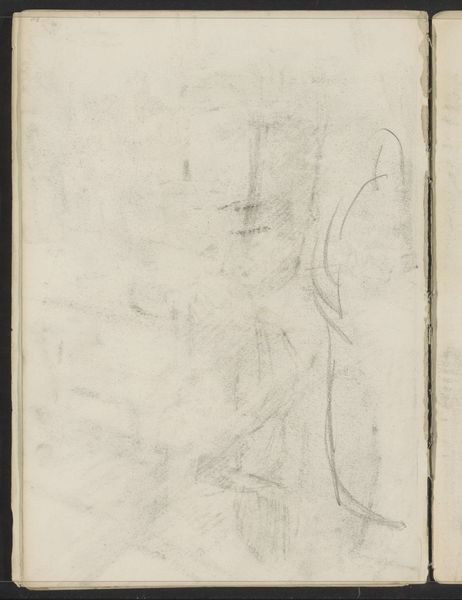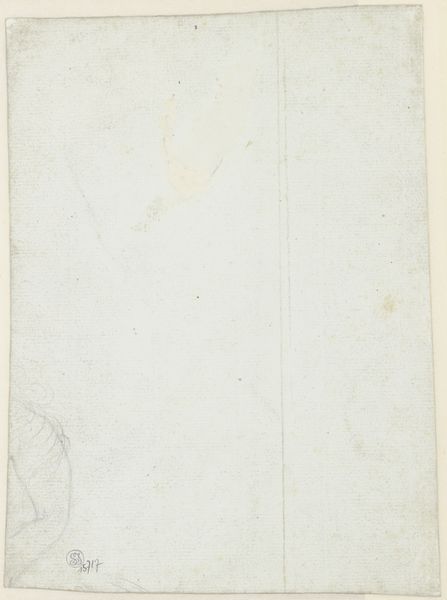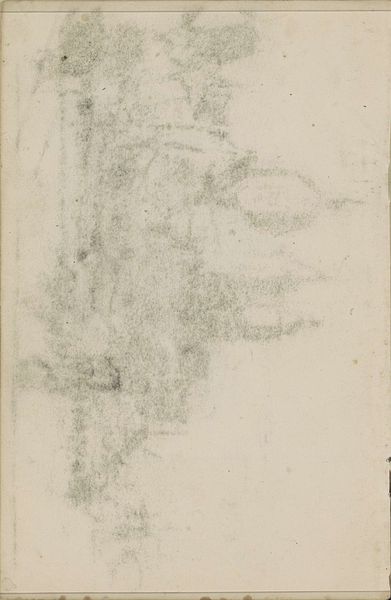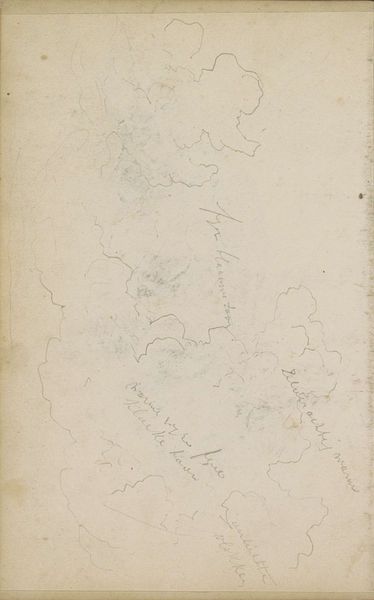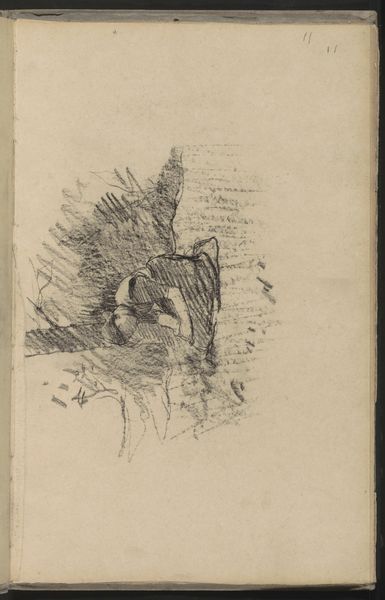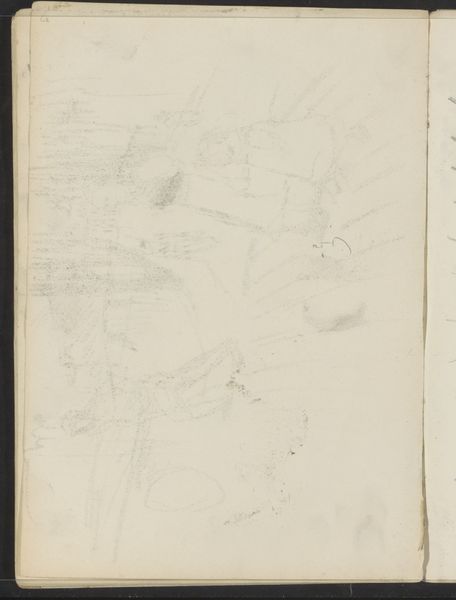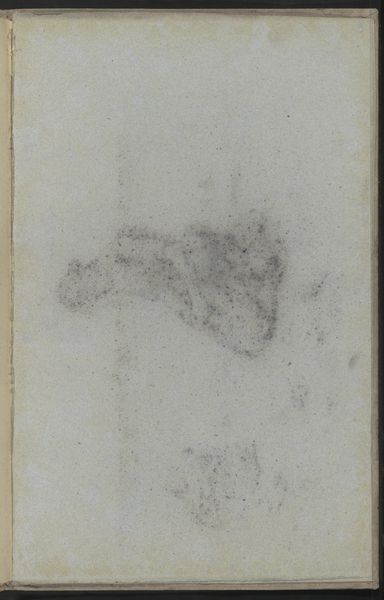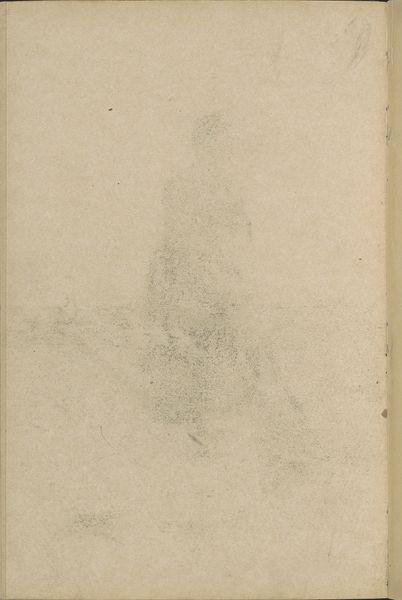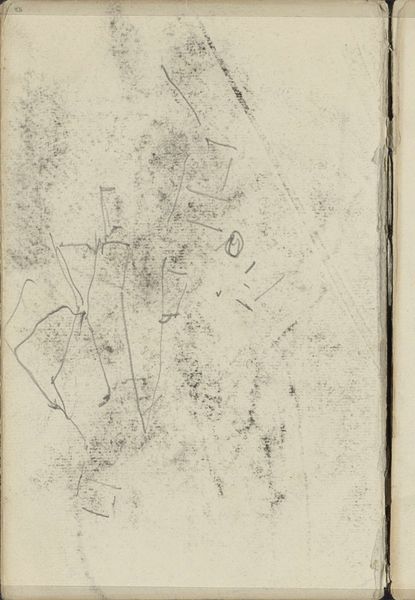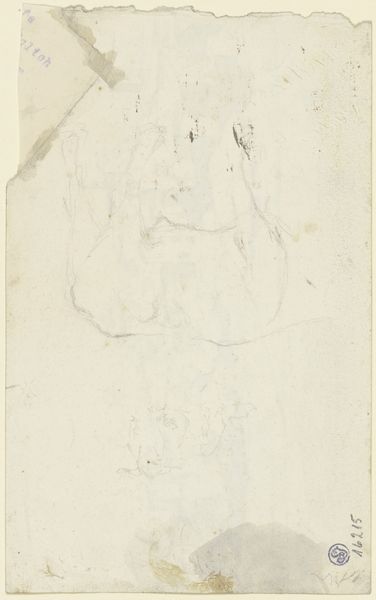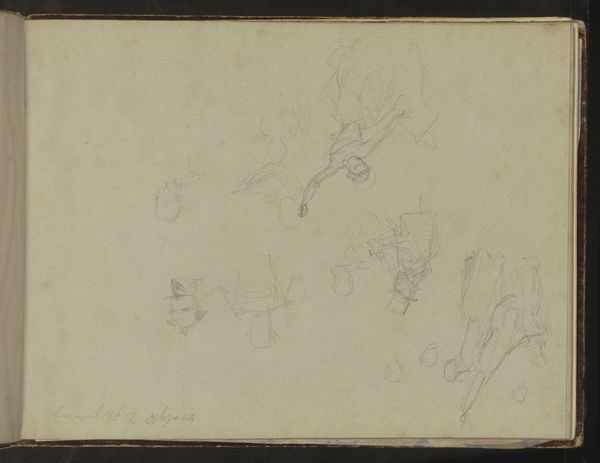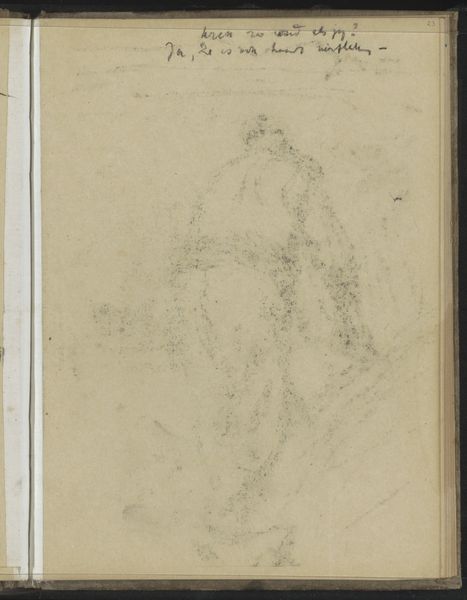
Copyright: Rijks Museum: Open Domain
Curator: George Hendrik Breitner created this pencil sketch entitled "Mannenhoofden, abklatsch van een krijttekening," sometime between 1886 and 1903. It resides here at the Rijksmuseum. Editor: It looks like a ghost or memory—a cluster of indistinct faces emerging from a pale background. The composition feels almost spectral in its vagueness. Curator: The "abklatsch" in the title suggests this may have been made by pressing paper against another drawing. The medium enhances the soft, ephemeral qualities. We can see Breitner's interest in capturing the fleeting moment—very much aligned with the Impressionist movement, you might say. Editor: It’s also very revealing of its own process. It seems like a study in the depiction of masculinity during a time of immense social upheaval. What roles were available, what societal masks did they don? It's a work haunted by expectation. Curator: It's an exploration of form and process more than direct social commentary, though. See how the faces lack sharp definition, reduced to subtle gradations of tone and shade? This reinforces a certain objectivity, almost clinical detachment. Editor: Detachment can still be political. The subjects are observed, yes, but one wonders about the artist’s relationship to them and the socio-economic factors influencing his artistic perspective. This isn’t an innocent study of form, but a loaded selection of which forms get represented at all, even in this fragmented manner. Curator: The act of replicating adds another layer to our understanding. What nuances were intentionally emphasized, what details are casualties of the printing? How does repetition of a portrait fragment affect the interpretation of the artwork and social understanding? Editor: Looking closer now, I start to think about labor—the physical act of transferring an image, of mass production, of social mimicry, and even identity, a concept heavily impacted by turn-of-the-century urbanization. It encapsulates a quiet visual revolution, as it challenges us to question how society looks at us, how we look at each other. Curator: It’s the dissolution of form rather than definition that strikes me as potent, it renders each identity as mutable and less determined. Editor: Indeed. Breitner uses this almost accidental quality to ask more deliberate questions. I leave here considering its significance, a challenge to norms around portraiture in painting.
Comments
No comments
Be the first to comment and join the conversation on the ultimate creative platform.
